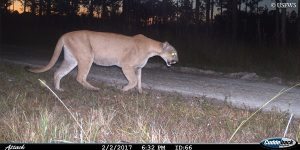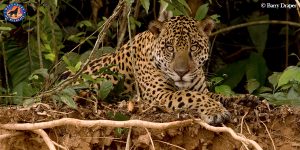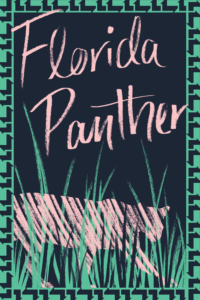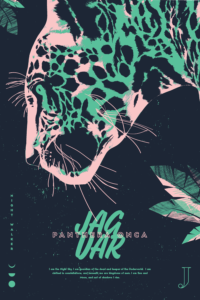Big Cats: Predators Under Threat
Today is World Wildlife Day! On March 3rd of every year, we celebrate the date that the Convention on the International Trade of Endangered Species of Wildlife Flora and Fauna (CITES) was signed. This international agreement is the foundation for the regulation of international trade of species.


As our world is losing biodiversity and humans are steering species toward extinction at unprecedented rates, World Wildlife Day is a chance to celebrate all species and the opportunity we have to work together to protect the ones we have left. This year, the focus of World Wildlife Day is Big Cats: Predators Under Threat. Many big cat populations are declining at alarming rates, with poaching and illegal trade as main culprits. Predators of all species are facing hostility, and a lack of acceptance as we push human civilization further into what is left of pristine habitat across the world. Defenders is working on the ground to promote coexistence, to protect habitat corridors and to advocate for the big cats that call North America home.
The Florida panther is an icon of Florida; the state’s official mammal, it is also one of the most endangered mammals on Earth. Panthers are an umbrella species: Protecting them and the vast, unspoiled, wild territory each one needs to survive — an average of 200 square miles for a single male — protects many other plants and animals that live there. At the top of the food chain, these cats help keep feral hog numbers in check and deer, raccoon and other prey populations balanced and healthy. And there has been good news for the Florida panther! In 2016, two female panthers with kittens and another pair of panthers were spotted north of the Caloosahatchee River, which has been a major impediment to dispersal, and, therefore, expansion of the species. This gives us incredible hope for the species, and we are working hard to further restore this great species to its historic range.
To prevent any conflicts between Florida’s clean energy future and the future of wildlife, Defenders staff is working with the solar industry to ensure that renewable energy plants are compatible with protecting important habitat for the Florida panther, Florida black bear, gopher tortoise and other species. We are also a part of the Florida Panther Recovery Implementation Team, working to reduce panther mortality from vehicle collisions. We helped to develop a Southwest Florida Hotspots map and materials to inform decision making and funding to improve safe passage across high mortality road segments in southwest Florida. We also host outreach events across Florida for citizens to learn more about the past, present, future and biology of the species!

Jaguars have historically ranged from the southwestern U.S., through Central America and into South America as far south as Argentina. However, the estimated 15,000 jaguars left in the wild have been pushed out of more than fifty percent of their range, which is why protecting habitat corridors is so important. Today, there is still habitat in the U.S. and just last year, 760,000 acres were upheld as critical habitat for jaguar in the Southwest!
Despite this habitat, the jaguar’s migration pathways are severely limited by the number of openings in the border between the U.S. and Mexico, and the impending expansion of the border wall. However, migration difficulty is not the biggest problem for the species. The increased trade of jaguar bones and teeth, in response to an increase in the Chinese market for tiger bone substitutes, has posed a significant threat to the species, especially the populations in South America.
Defenders is working with the U.S. Wildlife Trafficking Alliance (USWTA) to help combat wildlife trafficking and protect big cats from illegal trade: “Be informed. Buy informed”. The USWTA is a coalition of leading nonprofit organizations and companies that are working together to combat wildlife trafficking by: (1) raising public awareness; (2) reducing consumer demand for wildlife and wildlife products; and (3) mobilizing companies to adopt best practices and help close off wildlife traffickers’ supply chains.
Coexistence is one of the pillars of our work here at Defenders of Wildlife, whether we are talking about polar bears, wolves, salmon, desert tortoise, jaguars or Florida panthers. We are committed to reducing the conflict between humans and wildlife. And coexistence starts with us — the people in that equation. We believe that our human systems need to adapt to accommodate and work with natural ecosystems while we are working towards our conservation goals and increasing populations of endangered species, like these big cats we are celebrating on World Wildlife Day!









